Four years.
That’s how long it took Massabesic High in Waterboro to choose the best – and safest – synthetic turf surface to install at the school’s athletic field.
But safety, which once meant reducing knee injuries or concussions, has taken on a different meaning after a troubling 2014 NBC News report about the country’s most common artificial turf surface.
The network’s two-part series suggested the shredded rubber from tires – also called crumb rubber infill – used in most artificial surfaces was a possible cause of cancer in soccer players. While NBC stated that “no research has linked crumb rubber or shredded rubber to cancer” – and no previous or subsequent research has found a link between cancer and crumb rubber – the report sent school officials with artificial surfaces scrambling to allay fears of parents, coaches and players.
“You don’t want to put the kids at harm,” said Gordie Salls, the athletic director at Sanford High, which is putting in a new turf field as part of its $100 million new school construction project.
Officials at Lincoln Academy in Newcastle felt so strongly about their students’ safety that they were willing to spend an additional $100,000 to use Nike Grind infill instead of crumb rubber on their field, which was installed in 2015.
K.J. Anastasio, the school’s athletic director, said the NBC report came out just as they were designing the field. After about six weeks of discussions, which included an anonymous donor paying for the field, school officials decided to “play it safe,” he said.
“For every study that you could find leading you in one direction, there was a different story going the other way. We felt the kids’ safety was the ultimate consideration and we were fortunate we were able to afford it. That’s a huge price.”
Fewer than 10 percent of the 153 high schools that are members of the Maine Principals’ Association have artificial turf fields. Most of those fields are at schools in southern Maine.
“I’d say probably close to 90 percent of them have crumb rubber infill,” said Harland Michaud, president of Saco-based Northeast Turf, which has installed artificial turf fields at colleges and high schools throughout the state.
The lack of a definitive study on crumb rubber has officials at other schools facing similar conversations when considering an artificial surface. But they may have an answer soon. The federal government is conducting a comprehensive study, with findings expected to be released by the end of the year.
ALTERNATIVES MEAN HIGHER COSTS
Crumb-rubber alternatives, all of which are more expensive, include EPDM (a synthetic rubber that does not use recycled material), organic fill (coconut husks and cork), TPE (thermo plastic elastomer) and Nike Grind (recycled sneaker sole byproducts). All infills are combined with sand to provide a softer surface.
Massabesic went with EPDM. Massabesic’s new GreenFields Evolution XQ 60 turf was installed this summer by Northeast Turf to complete a $3.1 million project that includes a new track, bleachers and lights.
“The project was important to the school and the community,” said Brendan Scully, Massabesic’s athletic director. “We did a healthy amount of research and worked through the details and our needs and the alternatives. I feel we came up with the best product for our facility.”
Massabesic and Sanford are joining a growing list of schools that are looking to extend playing time on their athletic fields for not only all their school teams but also local youth or adult recreation programs. Portland’s two public schools play on turf fields – Portland at Fitzpatrick Stadium, which had its surface replaced in 2015, and Deering at Memorial Stadium, which is scheduled to have its surface replaced in 2017.
Yarmouth, Falmouth, North Yarmouth Academy, Cape Elizabeth, Scarborough, Morse, Lincoln Academy in Newcastle and Thornton Academy in Saco are among high schools that have turf fields.
Turf fields have become a staple in many communities, especially in the Northeast with its harsh winters. Schools were searching for multi-purpose fields that would allow all of their sports teams to play on them without wearing them down and even in inclement weather.
“We had a facility that was grass and was used by only the boys’ lacrosse and football teams. By the end of each season of use by those teams, it was unplayable for any other team to be out there,” Scully said. “We wanted to provide a complex where as many of our teams as possible can play in the stadium and get the same experience – with the fans, the lights, the stadium, the whole nine yards – as the football and boys’ lacrosse.”
Representatives from two synthetic turf companies said it is difficult to determine how much more alternative infills cost, because of many variables: how much infill is used, how large the surface is, the shipping costs to the region where the project is located.
But each alternative infill will increase the cost significantly. For instance, if a pound of crumb rubber cost $1, a pound of recycled EPDM or coated crumb rubber would cost $2, a pound of TPE and organic fill would cost $4 and a pound of virgin EPDM would cost $8, according to estimates provided by GreenFields, a synthetic turf supplier based in Georgia.
Massabesic, according to Michaud, used recycled EPDM, essentially paying twice as much as it would have for crumb rubber.

‘WE DID A LOT OF RESEARCH’
The NBC report prompted some communities to think twice and athletic directors to spend copious amounts of time reading up on infill.
Yarmouth had to replace its turf field in 2013. It had crumb rubber infill. And when NBC’s report came out, Susan Robbins said the school put out information on the turf field and why the school chose to infill with crumb rubber again.
“We did a lot of research,” said Robbins, the athletic director at Yarmouth. “The research we came up with showed no link (between crumb rubber and cancer) whatsoever. My kids are on that turf all the time. If I thought we were contributing to anything dangerous to them, we would make a change.”
Emma Dutremble, a senior field hockey player at Thornton Academy, and Sophie Silva, a senior soccer defender at Deering, are both aware of the report but continue to play on artificial turf.
“I have been playing on turf for a long time and plan on continuing,” said Dutremble, who hopes to continue to play in college. “I feel I can’t let (the report) stop me. And I feel it was just the one story. So do I stop because of this one story? Or do I continue doing what I love?”
Silva added: “I’ve been playing soccer for so long and know so many people who have been playing. I feel even though research is still being conducted, if nothing has been found yet, I personally wouldn’t worry. Other people may feel different, but I wouldn’t want to not play on turf because it has been thought to cause cancer.”
According to the Synthetic Turf Council, an organization that oversees the synthetic turf industry, there were almost 11,000 synthetic turf fields in North America at the end of 2014.
Michaud said he relies on the research provided by the Synthetic Turf Council to provide safe materials in all his projects. “We’re not into putting in a product that is not in the best interest of a student-athlete or a child playing on the surface,” he said. “If someone told me there was any truth (in the cancer report), we wouldn’t do it. There have been customers who have asked for an alternate fill.”
The blades on artificial surfaces also come in different types, as each sport seems to prefer a different style. Field hockey, for example, likes a surface that is almost flat, like a carpet. Newer surfaces have fibers that are woven, so they last longer. Older turfs, which had tufted fibers, would lose blades during use.
Maintenance is also important. Turf fields should be brushed regularly to make sure the infill is spread evenly. There are times when, because of use, the infill thins out in certain areas of the field.
MORE-DEFINITIVE RESEARCH COMING
NBC’s report focused on Amy Griffin, a soccer coach in Seattle who compiled a list of 38 American soccer players who had been diagnosed with cancer. Thirty-four were goalkeepers. Griffin, an assistant coach at the University of Washington, has continued to track other players. According to an article that appeared in the April 2016 issue of Athletic Business, her list now contains at least 203 athletes with cancer, 159 of them soccer players.
While early studies in crumb rubber showed that the tiny pellets contained traces of toxic elements, none were found to be at levels dangerous to a person’s health.
After the NBC report, several cities, including New York and Los Angeles, placed a moratorium on artificial surfaces. Aaron Watson, the athletic director at Gray-New Gloucester, said the NBC report may have contributed to a failed referendum vote to install an artificial turf at his school. The vote came shortly after the report aired. “It was definitely a topic of conversation in our communities,” he said.
Studies have been done by the U.S. Environmental Protection Agency, the Centers for Disease Control and Prevention and several state agencies that have found no link between cancer and crumb rubber. The Synthetic Turf Council released a report by Dr. Archie Bleyer, who chaired the Children’s Cancer Group for 10 years, that concluded: “We naturally have a need to find something to blame but it’s not the crumb rubber or anything else in synthetic turf that caused the cancers.”
Dr. William Heinz, an orthopedist at Orthopaedic Associates in Portland, is chairman of the National Federation of State High School Associations’ medical advisory board and serves on the Maine Principals’ Association’s sports medicine committee. At the recent NFHS national convention, he cited Bleyer’s report to support turf fields. He believes they are safe and provide children with athletic opportunities to play that grass fields would not be able to provide.
“I told them that there are no peer review studies that link crumb rubber with increased cancer risk in adults or children,” said Heinz. “I suggest they keep using them.”
Even the American Cancer Society can’t settle the issue. Tom Flanagan, a communications official, said in an email that “The American Cancer Society, at present, doesn’t have a definitive stance on the issue as we await further independent research.”
It may be coming by the end of the year when three government agencies – the EPA, CDC and Consumer Product Safety Commission – release their findings of the latest study. The study, titled “Federal Research Action Plan on Recycled Tire Crumb Used on Playing Fields and Playgrounds,” says that while previous studies “have not shown an elevated health risk from playing on fields with tire crumb,” those studies were not comprehensive enough. And while the government realizes that “additional research questions may require evaluation beyond this year, the information will help answer some of the key questions that have been raised.”
Among the tests they are conducting is one to determine the toxicity of different types of tire crumbs and another on how the chemicals found in them can be emitted, whether through contact with skin or sweat, or inhaled.
CONFIDENCE IN CRUMB RUBBER
Salls, the AD at Sanford, is waiting for those results to help determine what infill to use on the school’s new artificial surfaces, which won’t be used until the fall of 2018. He said the school was considering the organic infill but there haven’t been many studies to determine how that product holds up in New England’s environment. Crumb rubber remains an option, for now.
“I’m hoping this study clears it up whether it’s harmful or not,” said Salls, who has been researching artificial fields for the last five or six years since talk of a new field began. “This is a huge project for our communities in this day and economy. You want to make sure you’re doing what’s best for the kids.”
Lincoln Academy’s Anastasio said they tested samples of several infills before deciding on the Nike Grind. He liked the organic infill but wasn’t sure how it would hold up.
“We like it,” he said. “And it’s multi-colored – white, green, like sneaker soles. One of the things we heard is that it might be distracting because it looks like confetti. We haven’t found that at all.”
Those schools that have crumb rubber are confident that they have the right materials as well.
In fact, when Portland had to replace the artificial surface at Fitzpatrick Stadium, the city went once again with crumb rubber. The project finished in the spring of 2015, well after the NBC report aired. Ethan Owens, the athletics facility manager for the city, said the available studies at the time found no cancer link and that they were happy with how the original field held up.
“It’s something we stay up on because these things come up once in a while,” he said of the NBC report. “We get every report, we read everything we can to remain on the cutting edge to make sure we do the right thing.”
The new turf at Fitzpatrick Stadium is a GreenFields turf. It is designed to be extremely durable, which is very important. According to Michaud, Fitzpatrick is one of the most used fields in the nation, in terms of hours of play. Owens said the infill at Fitzpatrick Stadium includes seven pounds of sand and three pounds of crumb rubber per square foot.
FUNDRAISING FOR A NEW TURF FIELD
Freeport is another school hoping to put in an artificial surface. Three times a referendum bond for an artificial field has failed. Now, a nonprofit organization called the Tri-Town Track & Field Project is hoping to raise $3.2 million to fund the project, which will also include a track. Nike has pledged $1 million to the project, contingent on the organization raising the remaining $2.2 million.
John Paterson, a co-chairman of the organization, said they have raised $1.9 million so far (including the Nike pledge). “Just locally, we’ve raised more than $900,000, which is pretty good,” he said.
Paterson said the group hopes that voters in RSU 5 also agree, in a November referendum, to reallocate $600,000 that has already been approved to improve the current grass fields as part of a larger $14.6 million Freeport High renovation.
He added that the organization has already decided to use Nike Grind as the infill. “We didn’t necessarily agree that crumb rubber is dangerous,” he said. “But we decided to allay any fears that people might have that we’d use Nike Grind.”
Send questions/comments to the editors.


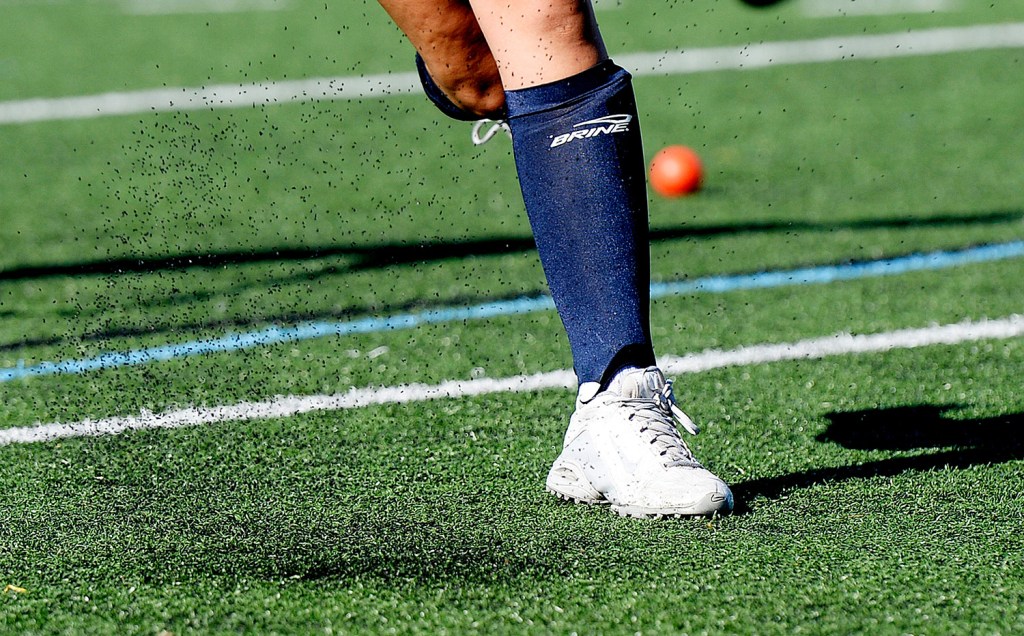
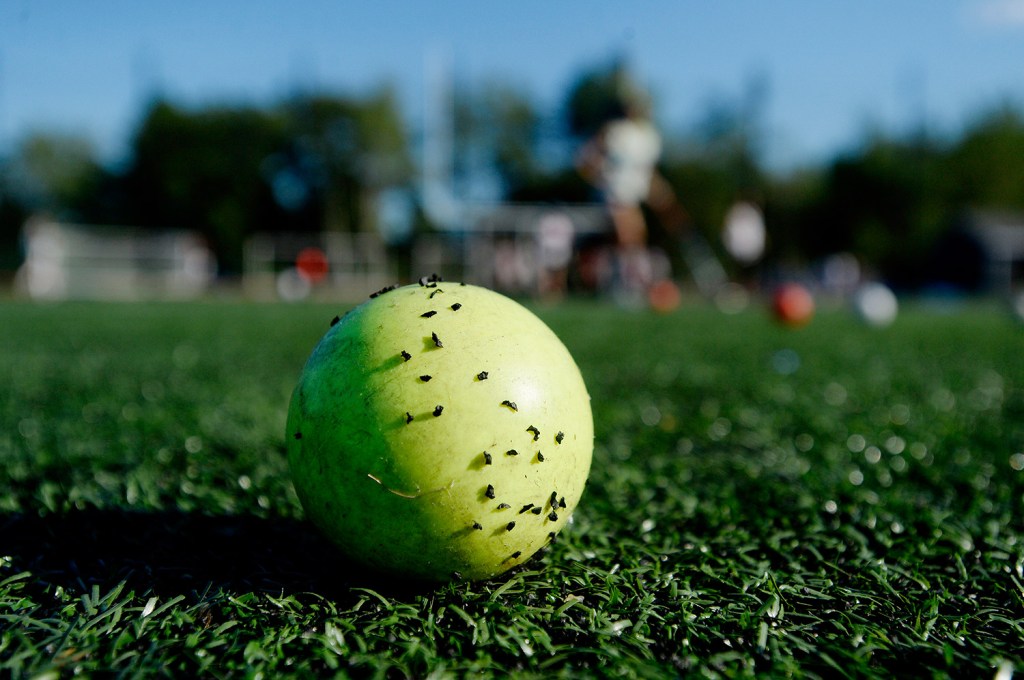

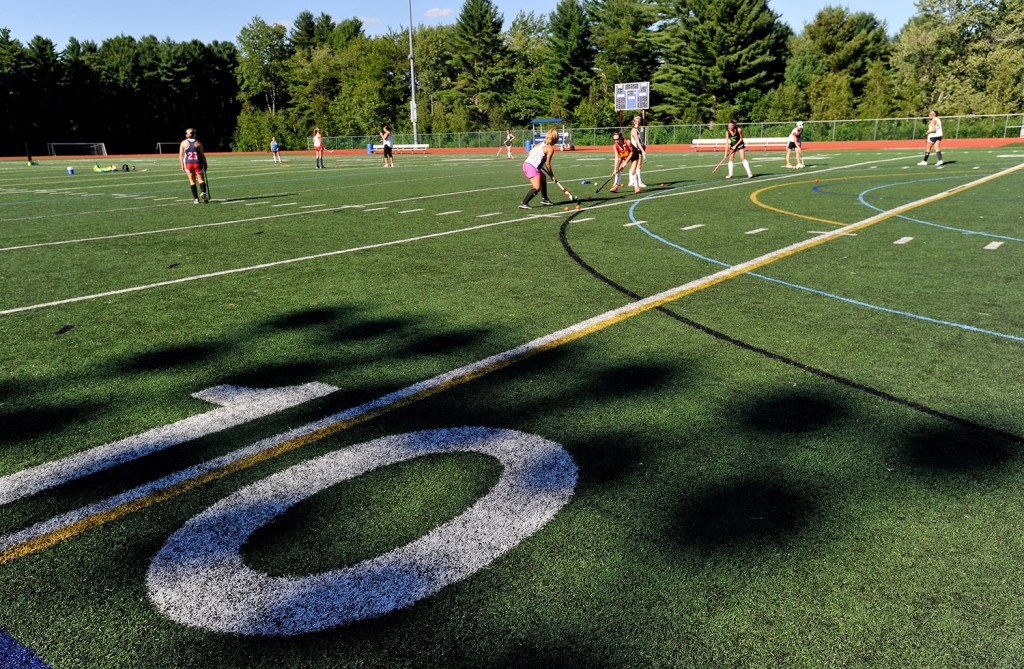
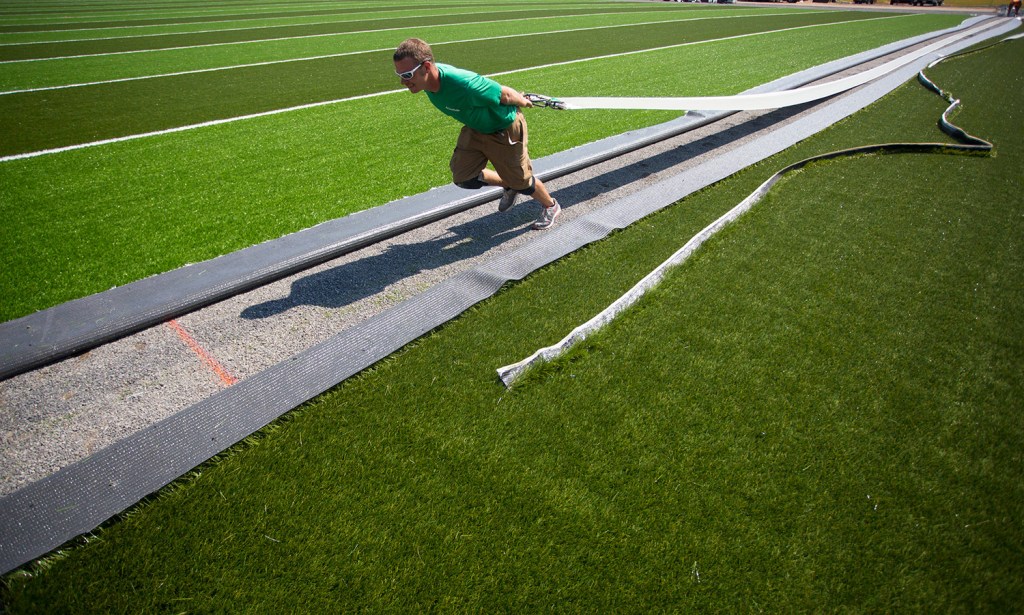

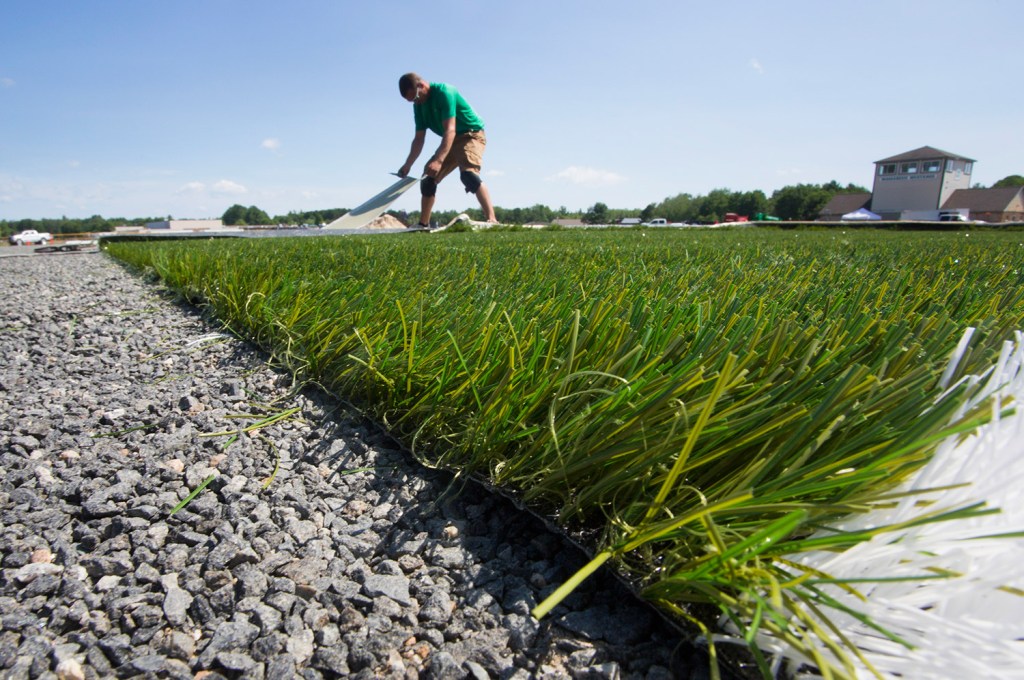

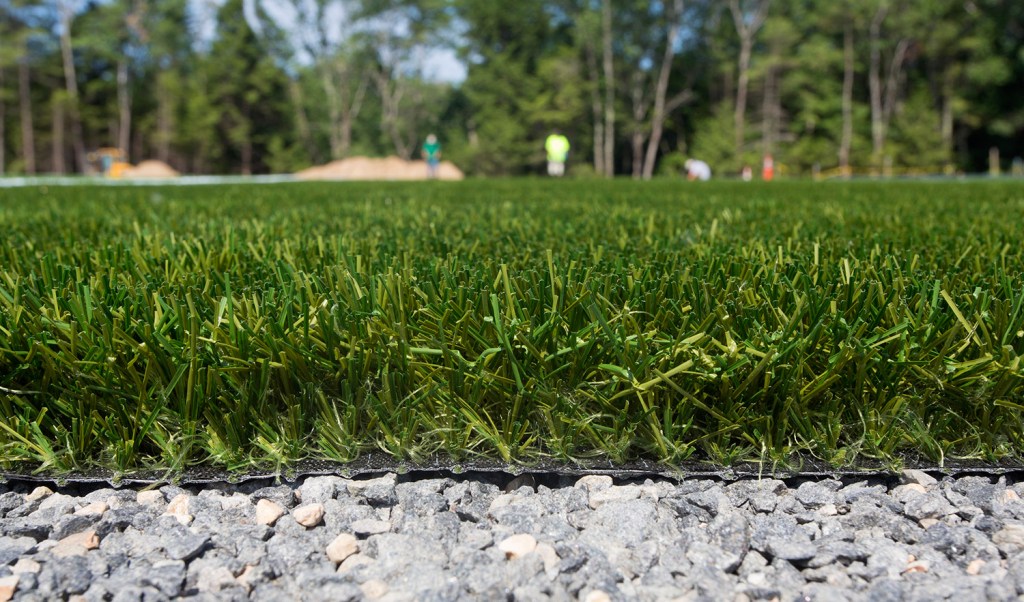

Comments are no longer available on this story